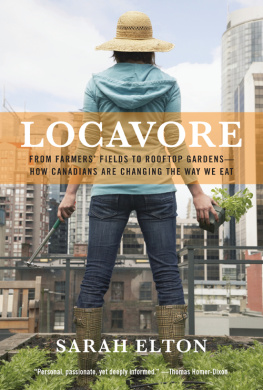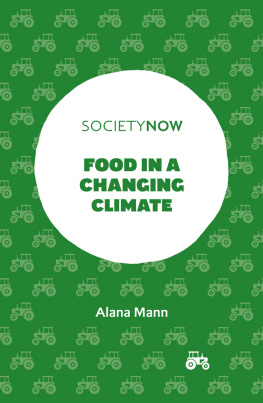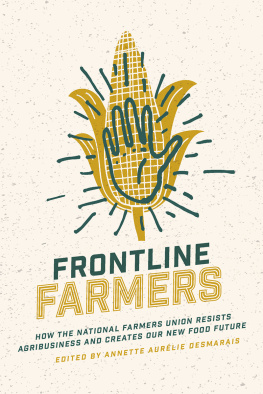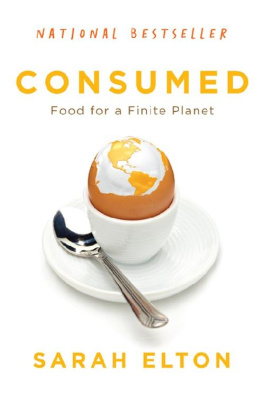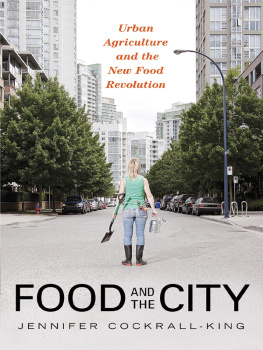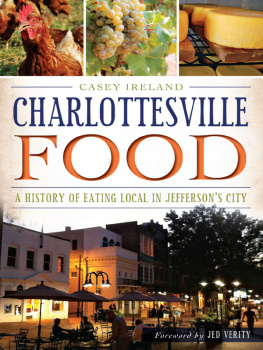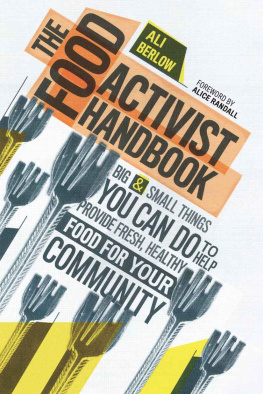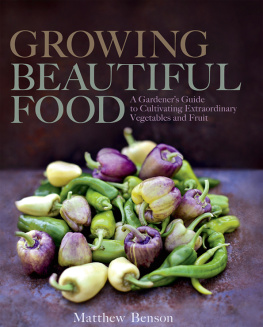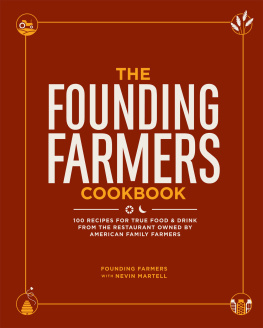for Kumail
INTRODUCTION
LOCAL FOOD FOR CANADA
I t all started with a cookie. A bakery cookie decorated with sugary pink icing to look like a pig. It reminded me of the treats my grandmother used to buy for me and my sister. My elder daughter brought the pink cookie home in a loot bag along with some bath paints and dollar-store toys. I was going to let her eat it, until I flipped it over and read the sticker on the back of the shrink-wrapped package. There, at the end of a long list of ingredients, was something I was more surprised to see than soy lecithin and artificial colouring. This cookie was no ordinary bakery confectionery. No, this cookie was madeI gaspedin China. I knew my shoelaces were made in China, the light switches in my house were made in China, and the shovel in my backyard and most of my clothing too. But this was a cookie, not a pair of pants; an item of food imbued with all sorts of cultural associations with home, happiness and family.
Rather than having been baked where Id expected, in a bakery, this cookie was created in a Chinese factory, run by an American company that makes six million of them every year. When I later called their headquarters, I learned that this cookies journey to my house began on a 175-foot-long conveyor belt from where it was loaded into a transport truck to be taken to a distant port and loaded again into the cargo hold of a ship that would take three weeks to travel to Vancouver from where it would be driven by yet another truck across the Rockies, the Prairies, around Lake Superior, south of Sault Ste. Marie, to Sudbury, and finally to Toronto. This cookie had a carbon load of a coal-fired power station.
This innocuous-looking pink-iced thing spurred me on a quest to understand more about the foods we eat and where they come from, and in the process changed the way I eat and the way I feed my family of four.
For some reason, that cookie brought it all together for me: everything that was wrong with our long-distance food system was embodied in that sugary pink pig. Until then, I could accept a supermarket where, all year round, you could find the same products, like Californian salad-in-a-bag, South African fruit juice medley, and New Zealand lamb. I hadnt questioned the bananas that sat in our fruit bowl or thought much about our daily dose of orange juice. I shopped and ate just like most other people in North America. I think the reason the cookie was the tipping point for me was because it was something that could easily have been made in Canadaan iced cookie isnt exactly a mango or a starfruit, something exotic from the tropics. And not only could this cookie have been made here, but had it been, it would have been an intrinsically better cookie. Had it been baked that morning in a local bakery to be sold to someone to eat that same day, it would have been fresh. It would not have required a mile-long ingredients list and, likely, it would have been an altogether tastier and, Ill hazard to say, healthier cookie.
Wait a minute, I thought. If this benign-looking cookie was made in Chinaand I only happened to catch sight of its origins written in minuscule print on the back of the wrapperwhat other surprises could I find in my grocery cart? Being a journalist with a food column simplified the task of uncovering what other products were being made in China for North American consumption. After a few phone calls, I learned that virtually all our apple juice and fruit juice medleys, such as cranberry cocktail and grape juice, contain concentrate made from apples grown in one of Chinas thousand-acre apple orchards; that China is the number one grower of pears, asparagus and black beans, and that the country produces more and more tomatoes for processing into paste and sauces every year. According to one business report out of China, more than half of the fruits and vegetables grown on planet Earth are cultivated there, not just to feed the populous nation but to supply its rapidly expanding agricultural export industry. China is producing more and more of our food.
The ecological ramifications of buying food grown as far away as China are enormousnot to mention the implications of relying on a country with a shoddy record of protecting consumers from tainted foods. I immediately started asking myself, what was the environmental cost of this long-distance food chain? China, of course, isnt the only country participating in industrial export agriculture, so what other distant countries were supplying major components of my diet here in Canada? And if China was now growing most of the apples for our juices, vast quantities of sunflower seeds and tomatoes and fill-in-the-blanks that Canadian farmers grow here too, what was happening to the men and women in our country whose livelihoods depended on farming? What was the fate of the farmland they cultivated? It was somewhere between my kitchen and the grocery store that the connection between the food we eat in Canada and serious environmental problems such as climate change, the ecological toll of industrial agriculture and the future of our food supply became startlingly obvious. The geographical distance our food travels, I realized, was a metaphor for the true environmental cost of our food.
I might live in the countrys biggest city and far away from farmers fields, but its the same story across Canada. No matter how close you live to farmland, chances are the food you are eating travelled long distances. In Newfoundland, less than 10 percent of the food people eat is grown on the island. In Quebec, imports crowd the shelves. A 2005 study conducted by FoodShare in Toronto found that food in a sample shopping basket from a downtown grocery store travelled an average distance of 5,364 kilometres. In Manitoba, despite its strong agricultural sector, most of what youll find in peoples kitchens comes from elsewhere. And on Vancouver Island, where only a few decades ago a residents diet was made up of 85 percent locally grown and processed foods, this number has plummeted to less than 10 percent. Despite the emergence on the mainstream stage of the lively local-food movement, which has given us a wonderful network of farmers markets, Community Supported Agriculture schemes and other ways to buy local food, we continue to import the very same foods we actually grow hereand then export what we produce. Carrots from Ontarios richest soils, in the Holland Marsh, are loaded onto trucks and driven south to the United States and shipped to places as far away as Puerto Rico and Venezuela, passing other trucks heading north loaded with American carrots destined for Ontario stores.
And its not just carrots. We import all sorts of fruits and vegetables into Canada that we cultivate right here. According to data collected by Statistics Canada, much of the broccoli we eat comes from the United States, followed by Mexico and China. We import lettuce primarily from the United States and Mexico, but we also fly it in from China despite the fact that air travel is the most carbon-heavy form of shipping. We truck in potatoes from the United States even though, according to the United Potato Growers of Canada, farmers in Prince Edward Island in 2008 and 2009 grew 907 million kilograms of the tubers. The way we Canadians eat is simply not sustainable.
What all these facts and figures meant for me as a consumer was that every choice I made at the grocery store was suffused with larger issues and had implications not only for our familys pocketbook and our health but for the future of the planeta pretty dire pronouncement for a regular old grocery run. I would find myself stumped in the produce aisle: organic or local? In the cooler section Id ponder which was better, the really expensive organic milk or the regular stuff for less than half the price, all the while shivering in front of open refrigerated shelves of milk. What was the environmental cost of
Next page
